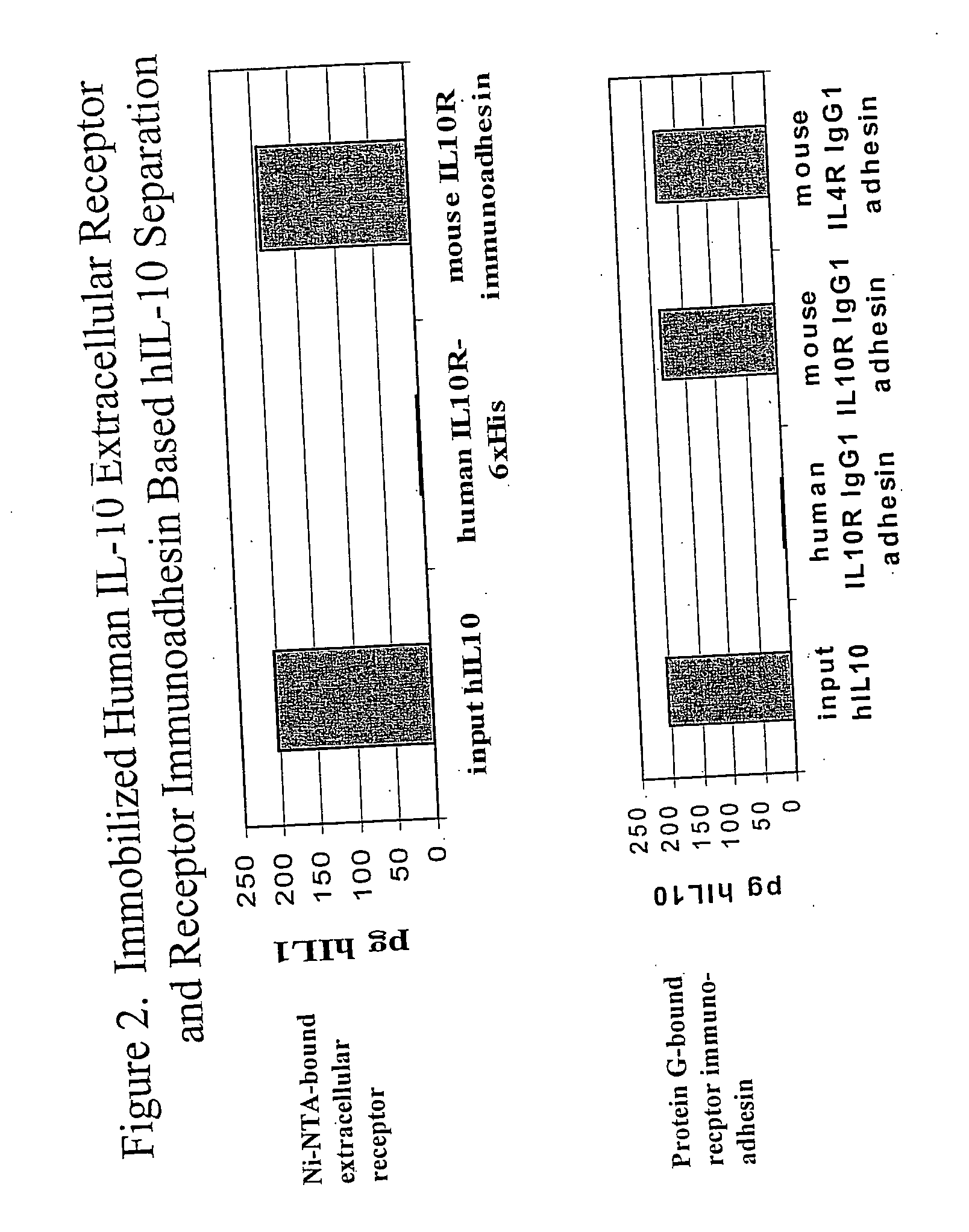Neutralizing factors as vaccine adjuvants
- Summary
- Abstract
- Description
- Claims
- Application Information
AI Technical Summary
Benefits of technology
Problems solved by technology
Method used
Image
Examples
example 1
Recombinant Vaccinia Encoding the Extracellular Domain of IL-10 Receptor
[0071] This example illustrates the construction of a gene delivery vector capable of directing the expression of the extracellular domain of a receptor for an immune suppressive factor. Recombinant Vaccinia producing the human IL-10 receptor extracellular domain is generated using standard techniques. The wild-type (wt) virus used in the preparation of the recombinant is derived from the Wyeth strain of vaccinia (Centers for Disease Control, Atlanta, Ga.). The full-length cDNA for human IL-10 receptor is obtained from clone pSW8.1 (GenBank Accession #U00672) and the extracellular domain is PCR amplified using the h10RKCS plus strand primer (SEQ ID NO:1) and the h10R6H minus strand primer (SEQ ID NO:2). The DNA sequence encoding the IL-10 receptor extracellular domain is cloned first into the HindIII / BamHI site of pBLUESCRIPT II SK (STRATAGENE, La Jolla, Calif.) and subsequently into the Sal1 and Not1 sites of ...
example 2
Construction of Recombinant Vaccinia Encoding IL-10-R Immunoadhesins
[0072] This example illustrates the construction of an immunoadhesin capable of neutralizing an immune suppressive factor. The DNA sequence encoding the extracellular domain of a receptor for an immune suppressive factor is isolated as described in Example 1 and ligated to a DNA sequence coding for an immunoglobulin backbone. The resulting chimeric DNA sequence coding for the immunoadhesin is subcloned into an expression vector. Clone pSW8.1 (GenBank Accession #U00672) containing the full-length human IL-10 receptor cDNA is used as a template for the PCR amplification of the receptor extracellular domain sequence (SEQ ID NO:3). The IL-10 sequence is PCR amplified by the use of the h10RIA3 minus strand primer (SEQ ID NO:4) which includes a Sal1 site for ligation of the hIL-10 extracellular receptor domain DNA sequence to the DNA sequences of the human IgG1 and IgA1 hinge region domains; and the h10RKCS plus strand p...
example 3
Construction of a Dual-Gene Vaccinia Recombination Plasmid
[0074] This example illustrates the construction of a vector specifically adapted for the expression of two genes in the production and secretion of functional engineered antibodies and other heterodimeric proteins as well as both subunits of a homodimer by the same infected cell. For this purpose, a vaccinia recombination plasmid containing the following elements is synthesized: 1) two strong early / late vaccinia promoters for high level transcription, 2) vaccinia thymidine kinase (TK) sequences for homologous recombination with the TK locus of the viral genome allowing easy selection of TK negative recombinants, and 3) the E. coli lacZ gene useful for identifying recombinant viruses and for staining of tissue samples to demonstrate viral infection and replication.
[0075] Two of the single-gene vaccinia recombination plasmids that are suitable for construction of a dual-vector are pSC11 / 9 and pSC65 (GenBank Accession #AX0032...
PUM
| Property | Measurement | Unit |
|---|---|---|
| Immunogenicity | aaaaa | aaaaa |
Abstract
Description
Claims
Application Information
 Login to View More
Login to View More - R&D
- Intellectual Property
- Life Sciences
- Materials
- Tech Scout
- Unparalleled Data Quality
- Higher Quality Content
- 60% Fewer Hallucinations
Browse by: Latest US Patents, China's latest patents, Technical Efficacy Thesaurus, Application Domain, Technology Topic, Popular Technical Reports.
© 2025 PatSnap. All rights reserved.Legal|Privacy policy|Modern Slavery Act Transparency Statement|Sitemap|About US| Contact US: help@patsnap.com



